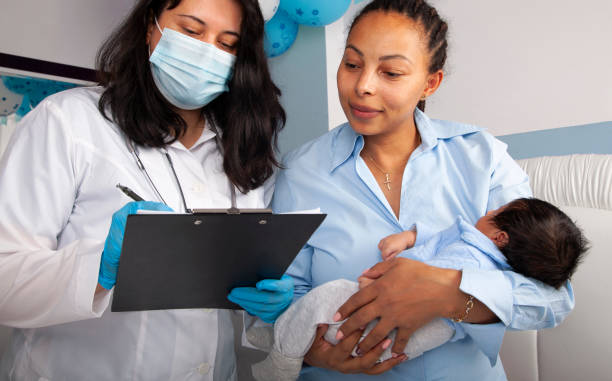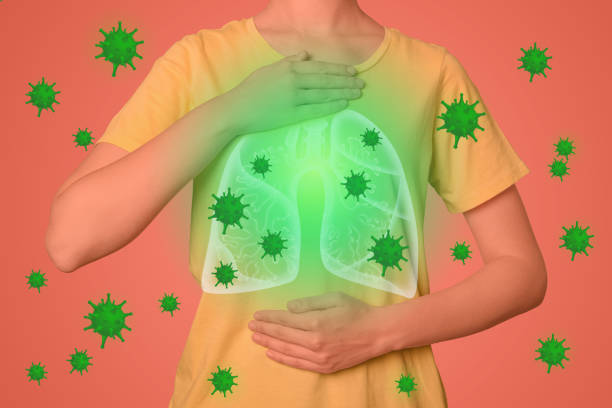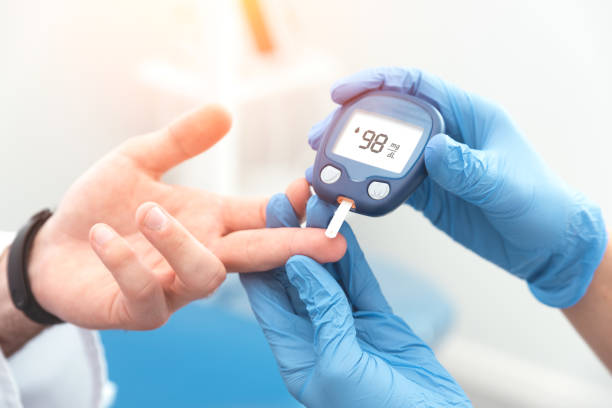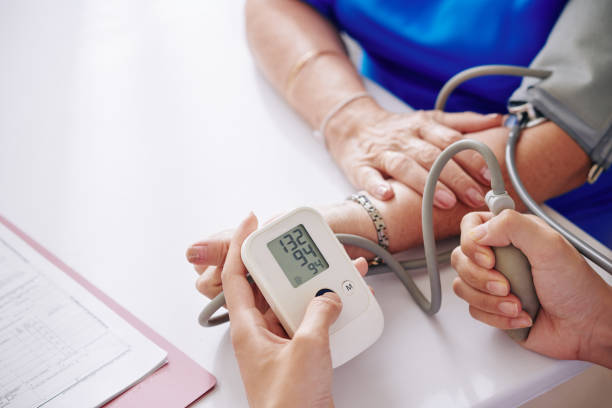Nursing Care Plan For Pneumonia
Use this guide to help you formulate nursing care plan for Pneumonia and general nursing management of pneumonia.
Pneumonia is an inflammation of the lung parenchyma accompanied by alveolar edema and congestion that limit gas exchange.
In a healthy adult, pneumonia normally isn’t cause for alarm and may not even necessitate hospitalization. However, those at higher risk, such as the elderly, those with weaker immune systems, and the very young, may need hospitalization and medical care.

Patients in intensive care units frequently develop pneumonia, often as a result of intubations and breathing supports. The mortality rate for patients in these units is typically between 25 and 50 percent.
TYPES OF PNEUMONIA
Bacterial pneumonia: This particular type of pneumonia is brought on by different bacteria, the most prevalent of which is streptococcus pneumonia.
This can affect people of all ages and typically happens when the immune system is weak or impaired. Smokers, those who have viral infections, etc. are at higher risk.
Read Also: Nursing Care Plan For Fever
Viral pneumonia: This type of pneumonia is caused by various viruses and it is responsible for about one-third of all pneumonia cases.
Mycoplasma pneumonia: This condition is also referred to as atypical pneumonia, is brought on by the bacterium mycoplasma pneumonia, affects people of all ages, and has milder signs and symptoms than other types of pneumonia.
Other pneumonia
These are types of pneumonia that are usually less common and may be caused by either fungi or any other infection.
Signs and symptoms of pneumonia
Pneumonia’s common signs are coughing, sputum production, pleuritic chest pain, trembling chills, quick shallow breathing, fever, and shortness of breath.
Hypoxemia, respiratory failure, pleural effusion, empyema, lung abscess, and bacteremia could all worsen from untreated pneumonia.

Diagnosis of pneumonia
A comprehensive history and physical exam can frequently identify pneumonia.
- sputum testing
- Blood tests
Management Of Pneumonia
Your specific form of pneumonia will determine your treatment.
In some rare situations particularly with mycoplasma pneumonia, it might also hasten recovery.
The majority of viral cases of pneumonia heal on their own with no particular therapy.
A balanced diet, drinking more water, getting more rest, oxygen therapy, and using painkillers and fever-relieving medications are all potential additional treatments.
Nursing Care Plan For Pneumonia
- One of the infections the nurse will treat and come into contact with most frequently is pneumonia. The nurse needs to comprehend how to keep an eye out for problems, infection worsening, and treatment justifications.
- By providing education, nurses can also help to avoid pneumonia.
- The danger should be explained to patients with impaired immune systems, such as those with COPD, HIV, or autoimmune illnesses, and precautions should be taken.
- Smoking should be avoided because it raises the risk of pneumonia. For eligible populations, nurses should check for and promote the use of pneumonia vaccinations.
Pneumonia nursing care plan 1:
Nursing diagnosis:
- Ineffective Airway Clearance
Related to :
- Secretion in the bronchi
- Excessive mucus
- Comorbidities
- Poor cough reflex: asthma
- Pleuritic pain
- Aspiration
- Fatigue
Evidenced by
- Change in respiratory rate and rhythm
- Restless
- Shortness of breath
- Excess sputum production
- Ineffective cough
- Cyanosis
- Abnormal breath sound
- Use of accessory muscles when breathing
Desire outcome
- The patient will maintain a patent airway
- The patient will demonstrate proper airway clearance technique
- The patient will show improved airway clearance evidenced by clear breath sounds and breathing without the aid of respiratory muscles.
Ineffective Airway Clearance Assessment
- monitor patient for respiratory change
Changes in breathing depth, rhythm, and rate can be gradual or abrupt. If the respiration rate increases, the breathing becomes difficult, the auxiliary muscles are engaged, or the oxygen saturation levels fall, take immediate action.
Assess the ability and effectiveness of coughing.
- Inflammation and increased sputum output are a result of pneumonia infection.
- To maintain a patent airway, the patient must be able to properly clear these secretions by coughing out the secretions.
- Patients who lack the necessary strength or cough reflex might be unable to do so.
- Collect a sputum sample for culture.
- Ask the patient to expectorate sputum for testing if they can cough.
Ineffective Airway Clearance Interventions
- Assist with respiratory devices and techniques.
- Flutter valves move secretions to aid in clearing the airways, and incentive spirometers enlarge the lungs.
- The nurse should promote the hourly usage of these devices and give instructions on how to use them correctly.
- Suction when needed
- Patients with tracheostomies can require frequent suctioning to maintain clear airways.
- It is possible to teach patients who are weak or exhausted and have an unproductive cough how to suction themselves.
- Encourage positioning and movement
- To encourage lung expansion, immobile patients or those who require assistance should be rotated every two hours, helped into an upright position, or put into a chair.
- Administer nebulizer and other treatment While expectorants and mucolytics can help thin mucus and make it easier to cough up, nebulizer treatments can loosen pulmonary secretions.
Nursing care plan For Pneumonia 2:
Nursing Diagnosis:
- Impaired Gas Exchange
Related to:
- Fluid in the alveoli
- Inflammation of alveoli and airway
- Hypoventilation
- Collection of mucus in airways
- Evidenced by
- Hypoxemia
- Dyspnea, Tachypnea
- Confusion
- Pale, dusky, skin color
- Hypotension
- Cyanosis
- Tachycardia
- Restlessness, irritability
Desire outcome
- The patient will show proper oxygenation through ABGs within normal limits
- The patient will show appropriate actions to promote ventilation and oxygenation
Impaired gas exchange Assessment
Assess vital signs and lungs sound:
Monitor capillary refill, breathing rate and depth, sp02, blood pressure, heart rate, and breath sound to check for symptoms of hypoxia and alterations in perfusion.
Monitor arterial blood gas (ABGs) and oxygen saturation.
- Hypoxia is indicated by a decreasing sp02. The amount of carbon dioxide and oxygen in the blood is measured by arterial blood gases.
- If abnormal, the lungs are not oxygenating the tissues properly, resulting in inadequate perfusion.
Access to mental status change
Impaired gas exchange Interventions
Encourage relaxation and reduce work.
Patients might not be able to handle excessive activities.
Encourage uninterrupted rest in a stress-free environment, and spacing out activities like treatment or bathing to reduce oxygen demand.
Administer oxygen
- To sustain sp02 levels and to assist oxygenation, additional oxygen could be required.
Administer sedatives and narcotics with caution
- Drugs used to treat pain or anxiety should be strictly controlled because they can further inhibit the respiratory system.
Nursing Care Plan For Pneumonia 3 :
Nursing diagnosis:
- Risk For Infection
Related to :
- Presence of existing infection
- Inadequate primary defenses (decreased ciliary action, respiratory secretions)
- Invasive procedures such as intubation, suctioning
- Inadequate secondary defenses(malnutrition)
Desire outcome:
- The patient will not develop a secondary infection or sepsis
- The patient will display improvement in infection evidenced by stable vital signs and lab values.
Risk For Infection Assessment
- Monitor vital signs closely, especially during the initiation of therapy.
- Tachypnea, decreasing blood pressure, hypothermia or hyperthermia, an accelerated heart rate, and sepsis are all symptoms that need to be treated right away.
Evaluate lab values.
A high white blood cell count is a sign of infection. With pneumonia, this is a typical result, but it shouldn’t increase further after treatment.
Read Also: Nursing Scholarship For Nigerian Students
Evaluate the patient’s immunization status.
Pneumococcal vaccine and seasonal influenza vaccinations are used to lower the chance of acquiring pneumonia.
Assess sources of infection
All inserted lines, including IVs, catheters for the urinary system, feeding tubes, suction tubing, and breathing tubes, provide a risk of infection.
Risk For Infection Interventions: Administer antibiotics
The use of antibiotics is necessary in the case of a pneumonia diagnosis.
If the patient’s condition deteriorates or their test results do not change, they might not be getting the right antibiotic to treat the infection-causing bacteria.
Promote fluid intake and nutrition.
To maintain homeostasis and prevent dehydration, hydration is essential.
Fluids aid the kidneys in filtering and removing waste, preventing infections of the kidneys and urinary system.
Promoting oral fluid intake will cause respiratory secretions to move.
Promote skin integrity.
The body’s first line of defense against infection is the skin. Pathogens can enter the body when the skin is damaged.
Regular perineal care or linen changes might help to keep skin dry and clean.
Ensure precautions to prevent infection.
The most effective technique to stop and stop the spread of infection is to wash your hands properly.
To stop the spread of infections, the patient may have a visiting restriction.







